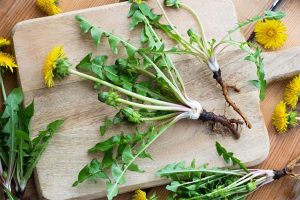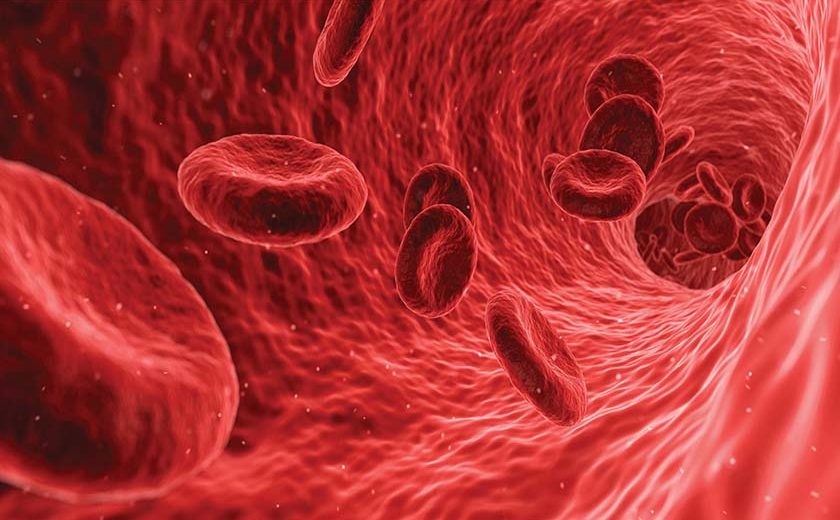Our body contains about 45 liters of blood that is circulated by our heart and circulatory system. An entire cycle takes approximately a minute.

Abraham Mathew Saji
Pharmacist
Apart from blood being highly important for thermoregulation, it also transports a number of substances such as dissolved food molecules (sugar, fat and amino acids), salts, hormones, waste products and especially red and white blood cells. The white blood cells (also called leucocytes) are an important part of our immune system and aid in keeping the body healthy. The red blood cells (also called erythrocytes) contain hemoglobin (Hb) molecule that binds oxygen and carbon dioxide.
Red blood cells are formed in the bone marrow of large bones throughout life. Approximately 2 to 3 million of them are formed every second, and just as many are broken down every second in the liver. The kidney produces a natural compound, erythropoietin, better known by the acronym EPO, which increases the formation of red blood cells. If one acquires a blood test and centrifuges the blood, it will divide into three layers.
At the top the yellowish plasma, in the middle a narrow white band consisting of white blood cells, and at the bottom the red blood cells aggregate. The fraction of red blood cells is also called the hematocrit value (HCT) and it should comprise about 45%. Our blood feeds every cell, tissue, gland, organ and organ system in your body. Without strong, oxygen-rich blood these systems can become compromised. Here are some of the ways to build stronger, richer, healthier blood.
Get moving
The best way to build oxygen-rich blood is to exercise. Not only does exercise help our heart pump blood, it also brings fresh oxygen to be supplied to all the systems.
Breathe deeply
Breathing deeply brings more oxygen to our lungs which then moves directly across into our blood. When we breathe and air enters our lungs, oxygen is delivered via our blood, to every cell in our body. Here, oxygen is consumed and helps in the production of ATP molecules (also referred to as the battery for our cells).
Eat more legumes
Rich in fibre and nutrients, beans and legumes help eliminate harmful cholesterol (LDL) and lower triglycerides. All types of legumes are best plant foods, enriched with iron. Legumes include soya nuts, red kidney beans, chickpeas, black-eyed peas, black beans, lentils, fava beans. Eating legumes in our daily diet will help to improve our iron levels which can energise us.
Get adequate iron
Iron forms the centre of the hemoglobin molecule making it essential for strong blood. Many pre-menopausal women are deficient in iron and may need supplementation. Some foods that are good sources of iron include lentils, kidney beans, prunes, green vegetables and dried apricots. Iron is the most critical nutrient in blood cells.
Take a B-vitamin supplement
The B-vitamins and folate are essential to lowering the amount of homocysteine in our blood. High levels of homocysteine have been linked to arterial clogging and heart disease, making it critical to control. It is always best to get our nutrients from foods, however, it may not always be possible in full or adequate amounts due to certain conditions. If there is a need for supplementation, it is best to consider a B-Complex rather than isolated B vitamins.
Consume Chlorophyll
Chlorophyll is the plant nutrient that gives vegetables their green colour. It is very similar to the hemoglobin molecule. Boosting the intake of greens combined with adequate iron helps boost our blood. Leafy greens such as spinach, kale and fenugreek leaves are high in vitamin K and hence one should consume them when their platelet count is on the lower side.
During an injury, the body activates proteins to stimulate formation of blood clots and stop the bleeding. These proteins depend upon the vitamin K for activation without which the clotting of blood is not possible. That is why, when the blood platelets are low, one must increase their consumption of leafy greens, especially kale as it contains high amount of vitamin K. Vegetable oil and parsley are also good sources of vitamin K.
Spice things up
Cayenne helps speed blood purification by stimulating cardiovascular activity and lowering blood pressure. Adding it to our meals enhances the flavour and also provides for a stronger cardiovascular system.
Drink aloe vera juice
Aloe vera juice has been used for many years by herbalists as a natural blood booster. It cleanses arteries and is anti-inflammatory. It is also rich in amino acids, enzymes, chlorophyll, vitamins and minerals, all of which help build strong blood.
Drink lots of water
Blood is largely made up of water and needs water to help it replenish.
Quit smoking
This seems fairly obvious since smoking pollutes blood, but if you haven’t quit yet, there’s no time like the present.
 Use dandelion root
Use dandelion root
Dandelion root has been shown to improve liver conditions by purifying the blood. Dandelion root can be cooked and eaten in soups, stews and smoothies. It can be boiled in water, strained and drunk as a tea. It can also be roasted and made into a coffee-like drink.
Eat more fruit and vegetables
Fruit and vegetables are packed with nutrients and phytonutrients that build blood and reduce arterial plaque, making them essential allies in blood and cardiovascular health.
Take sarsaparilla root
The root that flavours old-fashioned root beer has been shown to attack microbial substances in the bloodstream, thereby neutralising them. It contains compounds called saponins that have natural antibiotic (bacteria-killing) properties. It can be taken as an herbal decoction, tea or in oral solid form.
Eat more fibre
Research shows that a diet high in soluble fiber is effective in eliminating plaque buildup in the arteries.
Eat a more alkaline diet
The blood’s pH is naturally about neutral but our acid-forming diets can cause the balance to shift slightly in favour of acidity, which scours the arterial walls. Reduce sugar, soda, meat and processed foods in favour of alkaline vegetables (almost all vegetables are alkaline). Examples of alkaline fruits are avocados, fresh coconut, lemons, limes and grapefruit. Examples of alkaline legumes are lentils, navy beans and soy. Examples of alkaline nuts and seeds are almonds, pumpkin seeds, sprouts and sesame seeds. Examples of alkaline grains are buckwheat, quinoa and spelt.
The health conditions caused due to a compromised blood and circulatory system can be enormous as we can see that our blood acts as a vehicle for the functioning of almost all the other systems of our body. Hence it is time we take charge of ourselves and ensure that we build our blood up, both qualitatively and quantitatively.
It is always imperative and recommended to check with our healthcare practitioner or doctor prior to making any dietary or lifestyle changes and before starting supplements and medications.
References:
Roberta A; Supplements to Increase red Blood Cell Production; SF Gate; http://healthyeating.sfgate.com/supplements-increase-red-blood-cell-production-9931.html; accessed June 09, 2017.
Maria B; What Nutrients are needed for Red Blood cell Production?; SF Gate; http://healthyeating.sfgate.com/nutrients-needed-red-blood-cell-production-5131.html; accessed
June 09, 2017.
Rao A; Which fruits and vegetables help to increase the blood; Quora; https://www.quora.com/Which-fruits-and-vegetables-help-to-increase-the-blood; accessed June 09, 2017.
Abraham Mathew Saji is a pharmacist by qualification, engaged in research and development of medicines and their implications on the human body. He is an avid reader in pursuit of knowledge and understanding of technological advancements in the medical and pharmaceutical world. He is even more passionate about sharing his acquired knowledge, which he does by speaking at conferences, lectures and writing. He can be contacted at maz31abr@gmail.com for any clarification.


